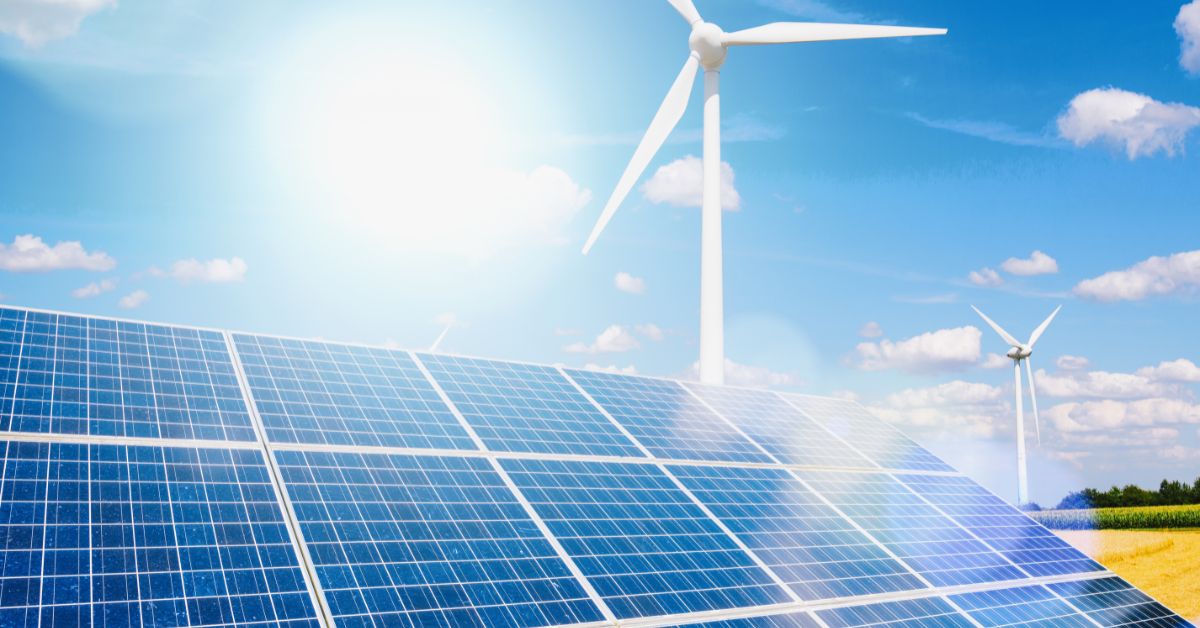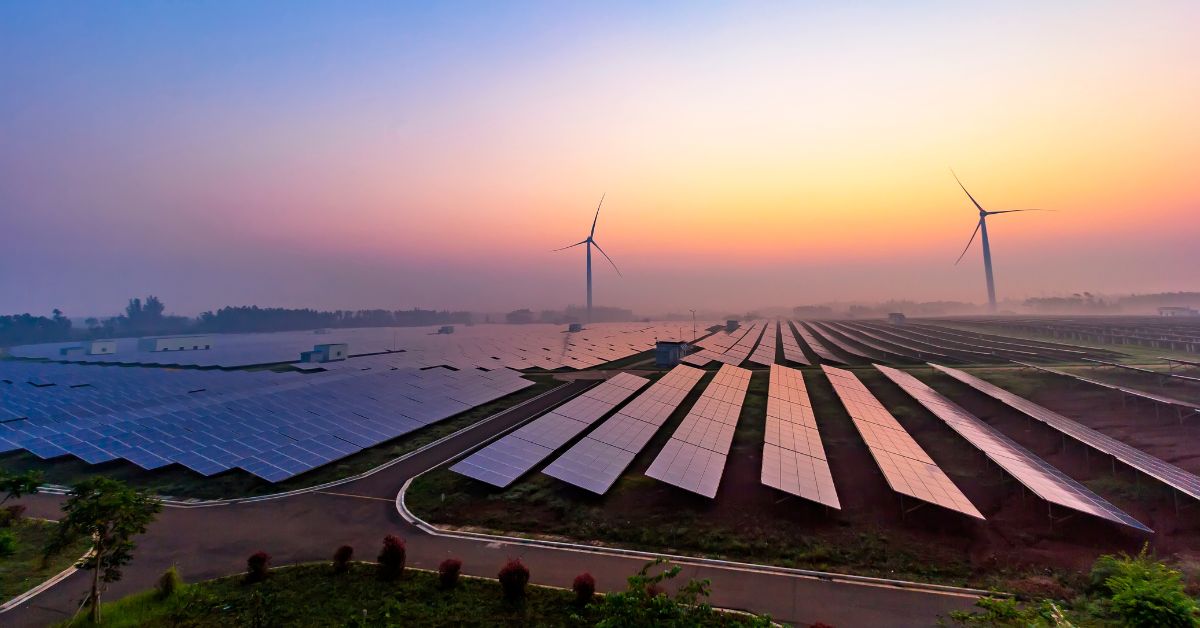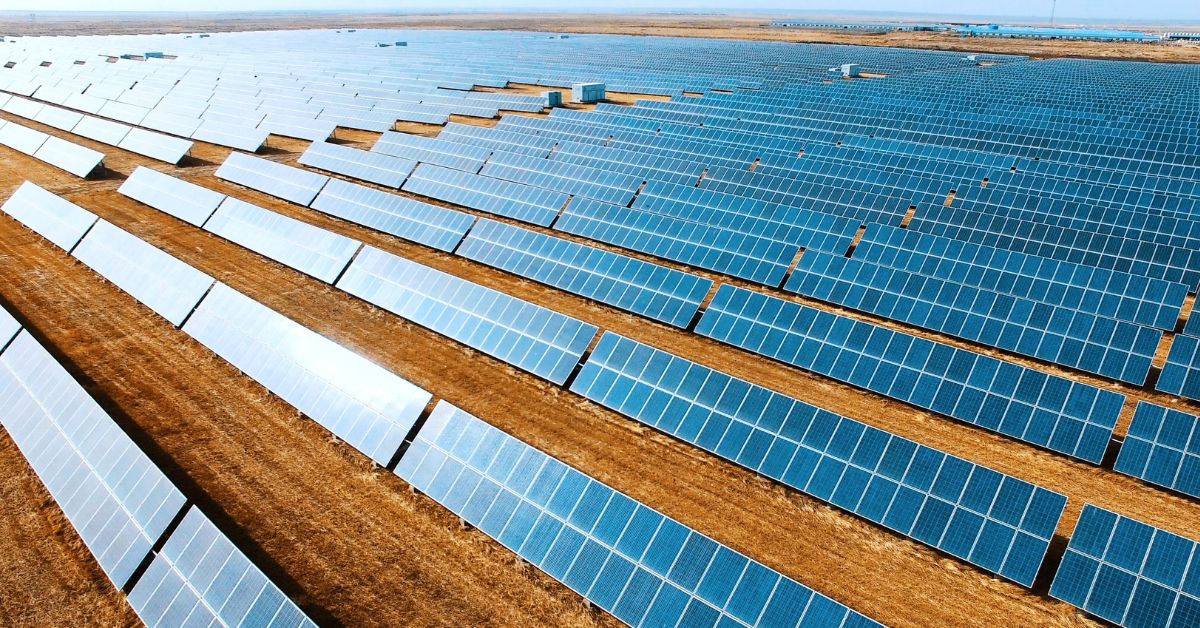Solar Wind Power Increase as Payment Delays Drop Fitch
Know the details about Solar Wind Power Increase as Payment Delays Drop Fitch, The rise in solar wind power is gaining momentum, driven by improving financial conditions, as delays in payments have significantly decreased, according to Fitch. The streamlined cash flow enhances project developers’ confidence, enabling faster expansions in renewable infrastructure.
This shift mitigates financial risk, encouraging increased investment in green energy solutions. Reduced payment delays reflect improved regulatory frameworks and greater market stability, fostering long-term growth for wind and solar sectors. Fitch’s analysis suggests that this financial improvement will likely fuel even greater reliance on renewable power, positioning solar and wind energy as pivotal drivers of global decarbonization efforts.
Table of Contents
Solar Wind Power Increase as Payment Delays Drop Fitch
As global energy demand continues to rise, the urgency to transition to renewable energy sources has gained unprecedented momentum. The transition to solar and wind energy is no longer a vision of the distant future, but an integral part of today’s efforts to mitigate climate change, reduce carbon emissions, and ensure energy security. Solar and wind power, once considered niche and expensive technologies, are now leading the charge in this renewable revolution. One key factor contributing to the recent acceleration in the solar and wind power sectors is the drop in payment delays, as noted by a recent Fitch Ratings report.
This article explores the dynamics of solar and wind power growth, the role of improved payment terms, the impact of financial institutions, and the market’s response to Fitch’s analysis of payment delay reductions. It also highlights the challenges and opportunities associated with this renewable energy surge, offering insights into the broader implications for energy policy, investment, and global climate objectives.
The Global Renewable Energy Shift
The global transition towards renewable energy sources has accelerated significantly over the past decade. Solar and wind energy have emerged as two of the most viable and scalable options for decarbonizing the global power supply. The International Energy Agency (IEA) estimates that renewables will account for nearly 90% of total global power capacity additions in the coming years, with solar photovoltaic (PV) and wind energy making up the lion’s share.

Countries around the world are setting ambitious targets to increase the share of renewables in their energy mix. The European Union (EU), for instance, has set a target of achieving 40% renewable energy by 2030, while China aims to reach carbon neutrality by 2060, with a strong emphasis on solar and wind energy development. The United States, under the Biden administration, has also ramped up its renewable energy goals, aiming for 100% clean electricity by 2035.
While government policies and incentives have played a critical role in driving this shift, improvements in technology, reductions in costs, and the financial health of the renewable energy sector are equally crucial in sustaining growth. One of the often-overlooked elements that influence the financial stability of renewable energy projects is payment delays and the creditworthiness of off-takers (entities purchasing energy from renewable projects).
Understanding Payment Delays in the Renewable Energy Sector
Payment delays in the renewable energy sector occur when energy producers (solar and wind power developers) do not receive timely payments from the utilities or companies that purchase their energy. These delays can have significant financial implications, as they disrupt cash flow, affect project viability, and increase the risk of default on loans and other financial obligations. Moreover, payment delays can also lead to a higher cost of capital for renewable energy developers, as investors perceive a higher risk.
In many emerging markets, where renewable energy potential is often the highest, payment delays have been a common issue. Factors such as poor creditworthiness of off-takers, regulatory uncertainty, currency fluctuations, and economic instability can contribute to these delays. For example, in regions such as Sub-Saharan Africa, Latin America, and parts of Asia, renewable energy developers have faced challenges in securing timely payments from state-owned utilities, which often suffer from financial difficulties and inefficiencies.
However, recent improvements in the financial management of utilities, coupled with policy reforms and better payment practices, have led to a reduction in payment delays in several key markets. This trend is encouraging, as it reduces the financial risk for renewable energy developers and improves the attractiveness of solar and wind power investments.
Fitch Ratings: A Closer Look at Payment Delays and Their Impact
Fitch Ratings, a leading credit rating agency, recently released a report highlighting the positive trend of decreasing payment delays in the renewable energy sector, particularly in solar and wind power projects. According to Fitch, this improvement has been driven by a combination of factors, including stronger regulatory frameworks, improved financial management of utilities, and increased involvement of international financial institutions.
The Fitch report also points out that the reduction in payment delays is contributing to the overall growth of solar and wind power by improving investor confidence and reducing the cost of financing. In turn, this is leading to an increase in new project developments, as developers are more willing to invest in markets where payment risks are lower.
One of the key takeaways from the Fitch analysis is the role of government support and policy stability in reducing payment delays. Countries that have implemented clear and stable regulatory frameworks for renewable energy projects have seen significant improvements in payment practices. For instance, nations that have established feed-in tariffs (FITs), power purchase agreements (PPAs), or auction systems with transparent terms have been able to attract more investment and improve the financial health of their renewable energy sectors.
Solar and Wind Power: A Bright Future
The solar and wind power sectors have been the primary beneficiaries of these improved payment practices. Both industries have experienced rapid growth in recent years, driven by declining costs, technological advancements, and growing environmental awareness.

Solar Power Growth
Solar power, particularly through photovoltaic (PV) technology, has become one of the fastest-growing sources of renewable energy. The cost of solar PV panels has dropped by more than 80% over the past decade, making it increasingly competitive with traditional fossil fuels. In many parts of the world, solar power is now the cheapest source of electricity, even without subsidies.
Utility-scale solar projects are being developed at an unprecedented rate, with large-scale solar farms being built in regions with high the solar irradiance, such as to the Middle East, North Africa, and the southwestern United States. In addition, distributed solar (rooftop solar) is gaining popularity in residential and commercial sectors, providing consumers with a way to generate their electricity and reduce their dependence on the grid.
The reduction in payment delays has further bolstered the growth of the solar sector. Investors and developers are now more confident in the financial viability of solar projects, particularly in emerging markets where payment risks were once a major concern. As a result, solar power capacity is expected to continue its upward trajectory, with analysts predicting that global solar capacity could double within the next five years.
Wind Power Expansion
Wind power, both onshore and offshore, has also experienced significant growth in recent years. Onshore wind farms, which are typically less expensive to develop than offshore projects, have been the backbone of wind energy development. However, offshore wind is increasingly gaining attention due to its potential for large-scale energy generation and its ability to provide more consistent and higher wind speeds than onshore sites.
Technological advancements in turbine design, such as larger rotor blades and improved materials, have increased the efficiency and energy output of wind turbines. As a result, wind power has become a more attractive option for both utility-scale projects and corporate renewable energy procurement.
Fitch Ratings’ report highlights the positive impact of reduced payment delays on the wind sector as well. With improved cash flow and reduced financial risks, wind power developers are more likely to invest in new projects, particularly in regions where wind resources are abundant. Offshore wind, in particular, is expected to see significant growth, as governments in Europe, Asia, and North America are increasingly prioritizing offshore wind development to meet their renewable energy targets.
Financial Institutions and Their Role in Renewable Energy Growth
The role of financial institutions in supporting the growth of solar and wind power cannot be overstated. Banks, development finance institutions (DFIs), and multilateral organizations have been instrumental in providing the necessary capital for renewable energy projects. In addition, these institutions have played a key role in mitigating payment risks by offering guarantees, insurance, and other financial instruments that protect developers from default by off-takers.
For example, the World Bank’s Multilateral Investment Guarantee Agency (MIGA) offers political risk insurance to renewable energy developers, helping them secure financing for projects in high-risk markets. Similarly, export credit agencies (ECAs) from countries such as Germany, Denmark, and the United States provide loan guarantees to developers working on solar and wind projects abroad.
Private sector financial institutions have also increased their participation in renewable energy financing. Large commercial banks, such as HSBC, Citibank, and BNP Paribas, have committed to aligning their portfolios with the Paris Agreement’s climate goals, meaning they are reducing financing for fossil fuel projects and increasing their investments in renewable energy. Green bonds, which are debt instruments specifically earmarked for environmentally sustainable projects, have also become a popular financing tool for solar and wind projects.
Fitch Ratings’ analysis suggests that as payment delays continue to drop, financial institutions will become even more willing to finance renewable energy projects, particularly in emerging markets. This increased availability of capital is expected to further accelerate the growth of solar and wind power.
Challenges and Opportunities in the Renewable Energy Sector
While the reduction in payment delays is a positive development for the solar and wind power sectors, challenges remain. One of the key challenges is the intermittency of renewable energy sources. Solar and wind power are both weather-dependent, meaning their energy output can fluctuate based on the availability of sunlight and wind. To address this issue, energy storage solutions, such as battery storage, are being developed and integrated into renewable energy projects to provide a stable and reliable power supply.

Another challenge is the need for grid infrastructure upgrades. As more solar and wind power is added to the grid, existing transmission and distribution networks may need to be expanded or upgraded to handle the increased load. In some regions, bottlenecks in grid capacity have slowed the deployment of renewable energy projects.
Despite these challenges, the opportunities for growth in the solar and wind power sectors are immense. The falling cost of renewable energy technologies, combined with the improving financial landscape, has created a favorable environment for continued expansion. Moreover, as countries around the world set increasingly ambitious climate targets, the demand for renewable energy is only expected to grow.
FAQs About Solar Wind Power Increase as Payment Delays Drop Fitch
Q1. What does Fitch’s report say about payment delays in the renewable energy sector?
According to Fitch Ratings, payment delays from utilities to renewable energy providers, especially in solar and wind power, have significantly decreased in recent years. This trend suggests greater financial stability and confidence in the renewable energy market.
Q2. How has the reduction in payment delays affected the solar and wind power sectors?
The reduction in payment delays has improved cash flow for solar and wind power companies, allowing them to reinvest in new projects, enhance operational efficiency, and reduce the need for costly financing to bridge payment gaps.
Q3. Why are payment delays in renewable energy important to investors and project developers?
Payment delays can affect the liquidity and creditworthiness of renewable energy companies. With fewer delays, investors and developers are more likely to view solar and wind projects as stable, increasing the appeal of renewable energy investments.
Q4. What factors have contributed to the drop in payment delays in the renewable energy industry?
Several factors have contributed, including improved utility payment structures, government incentives, and stronger contractual enforcement between power producers and utilities. Additionally, regulatory changes have boosted confidence in the reliability of these payments.
Q5. How has this trend impacted the growth of solar and wind energy projects?
With fewer delays in payments, solar and wind companies have better access to financing, which accelerates the development of new projects and increases overall capacity in renewable energy generation.
Q6. Are payment delays expected to continue declining in the future?
Yes, Fitch’s report suggests that payment delays are likely to continue decreasing as the renewable energy market matures, and financial practices among utilities and producers improve further.
Q7. What role do government policies play in reducing payment delays for renewable energy projects?
Government policies promoting renewable energy, such as feed-in tariffs, subsidies, and guarantees, have encouraged timely payments from utilities. These policies help ensure a steady revenue stream for renewable energy providers.
Q8. How does the decrease in payment delays benefit consumers of renewable energy?
Reduced payment delays can lower the cost of capital for renewable energy companies, which may translate into more competitive pricing for consumers. Over time, this could lead to cheaper and more widely available renewable energy.
Q9. What challenges remain in ensuring stable cash flow for renewable energy providers?
While payment delays have dropped, challenges such as regulatory changes, grid integration issues, and the financial health of utilities still pose risks to consistent cash flow for solar and wind companies.
Q10. How does Fitch’s assessment affect the broader outlook for renewable energy investment?
Fitch’s report provides a positive signal to investors that the renewable energy sector is becoming more financially reliable, which is likely to attract more investment and contribute to further growth in solar and wind power capacity.
Conclusion: A Positive Outlook for Solar and Wind Power
The recent drop in payment delays, as highlighted by Fitch Ratings, is a significant positive development for the solar and wind power sectors. Improved payment practices are reducing financial risks for developers and increasing investor confidence, leading to a surge in new project developments. As a result, solar and wind power capacity is expected to continue its rapid growth, contributing to global efforts to combat climate change and transition to a more sustainable energy system.
Looking ahead, the continued collaboration between governments, financial institutions, and renewable energy developers will be essential in overcoming challenges and unlocking the full potential of solar and wind power. With the right policies and financial support in place, the future of renewable energy looks brighter than ever.
Click here to learn more about Solar Wind Power Increase as Payment Delays Drop Fitch
Click here to learn more about Advantages and Disadvantages of Solar Energy

